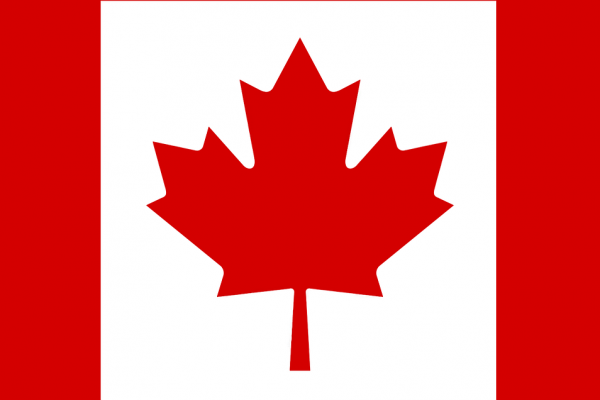
Partner Institution: Centre for Urban Policy and Local Governance, University of Western Ontario




The System of Local Government in Canada
Martin Horak and Brittany VanDenBrink, Department of Political Science, Western University
Types of Local Governments
Canadian federalism divides governing responsibilities among three levels of government: federal, provincial, and local. However, the Canadian Constitution gives the provinces sole jurisdiction over municipalities, which results in significant inter-provincial variation among local government systems. While the federal government in recent years began to provide money through joint federal-provincial programs for services that are ultimately delivered by municipalities (primarily hard infrastructure), there is typically no direct federal policy or regulatory involvement with the municipal level of government.[1] One side effect of this lack of federal involvement is that it is difficult to determine how many local governments there actually are in Canada. A comprehensive survey of available data from numerous sources, conducted in June 2021 by researchers at Western University,[2] indicates that there were 3,533 local governments in Canada as of 2020. This is a significant decrease from the total of 4,432 in 1995, which reflects the results of a large-scale wave of provincial imposed consolidations in several provinces around the turn of the millennium. Despite this consolidation, most municipalities in Canada are small and rural. A report based on the 2016 census finds that only 723 had a population of 5,000 or greater. By contrast, 24 municipalities had over 200,000 residents, while three municipalities (Toronto, Montreal and Calgary) had over 1 million inhabitants. Toronto is Canada’s largest municipality, with a population of 2.9 million as of July 2018.[3] Just as the country’s 10 provinces and three territories[4] vary in population size, so too do their municipal populations. Ontario tends to have larger municipalities as a result of its history of amalgamations imposed by the province, many of which took place in the 1990s.[5] Ontario currently has 444 municipalities.
In some cases, urban municipalities have distinct status under provincial law. For example, Vancouver, Winnipeg, Montreal, and Saint John are Charter Cities, which means that they are governed by their own piece of legislation – or ‘Charter’ – rather than being subject to the broad, province-wide legislation that governs the activity of other municipalities.[6] The City of Toronto is likewise governed by stand-alone provincial legislation. However, in general the degree to which these charters grant powers and resources over and above those of other municipalities is limited.
Table 1: Types of municipalities in Canada’s four most populous provinces.[7]
| Province | Types of Municipality |
| Ontario | Village Township Town Municipality City County Regional Municipality |
| Quebec | Village Township United Township Town Municipality City Parish Regional Government Metropolitan Community Regional County Municipality |
| British Columbia | Village Town District Municipality City |
| Alberta | Summer Village Village Town City Specialized Municipality Municipal District Improvement District Metis Settlement Special Areas |
Generally, Canadian municipalities are responsible for providing physical services including water supply, waste management, local infrastructure management, sewage treatment, planning and development services, libraries, parks and recreation, local police, and parking.[8] These local government tasks are administered through general purpose municipalities (variously called cities, towns, villages, etc., depending on size), sometimes in conjunction with special purpose bodies. The table above compares the largest four provinces by population to illustrate variation in the legal types of municipalities. In addition to these, there are numerous local government bodies that do not have municipal status – such as British Columbia’s regional districts, which are multi-purpose service federations of municipal governments.
In some provinces, including Ontario, Quebec and Alberta, there is a single tier of local government in some areas, and two tiers of local government in other areas. Upper-tier governments in Ontario, for example, are either called counties or regional municipalities, with the latter typically found in large urban areas. Upper-tier municipalities are comprised of the lower-tier governments within their boundaries. They provide region-wide services like arterial roads; transit; policing; sewer and water systems; waste disposal; region-wide land use planning and development; and health and social services.[9]
Legal Status of Local Governments
Canada’s Constitution specifies the terms of Canadian federalism. It assigns responsibility for local governments to the provinces. This means that the provincial governments have full jurisdiction over the local governments in their territory. Section 92 of the Constitution Act of 1867 specifies the powers of the provinces and Section 92(8) gives each provincial legislature the power to make laws for the municipal institutions under its jurisdiction. Municipalities are often referred to as ‘creatures of the province’ because they rely on the provinces for their legal existence.[10]
There is significant variation among the provinces in terms of the structure of municipal legislation. Historically, provincial legislation has tended to lay out every power granted to its municipalities; if a specific power is not listed, municipalities do not possess that power. However, in recent years this has shifted, and most provinces now have legislation, such as that implemented in Alberta in 1995 and Ontario in 2001, which grants municipalities the same powers as a ‘natural person’ unless specifically excluded by the legislation. This gives municipalities the same rights as businesses to enter into contracts, own property, and make investments. Moreover, British Columbia’s provincial government sets only broad legislation within which municipalities have the authority and flexibility to respond to each community’s unique and changing needs. The Government of British Columbia views municipalities as autonomous and accountable to their democratically elected municipal councils.[11]
Both urban and rural municipalities in all Canadian provinces have some legal authority to act in the following functions: fire protection; animal control; roads; traffic control; solid waste collection and disposal (except in Prince Edward Island); land use planning and regulation; building regulation; economic development; tourism promotion; public libraries parks and recreation; cultural facilities; licensing of businesses; emergency planning and preparedness; rural fences and drainage; regulation and/or provision of cemeteries; airports (excluding major airports formerly operated by the federal government); and weed control and regulation of cosmetic pesticides.
Additionally, the following functions are typically delivered by urban municipalities: public transit; regulation of taxis; water purification and distribution; sewage collection and treatment; downtown revitalization; and regulation of noise. Generally, urban municipalities are also responsible for policing, although in some provinces special purpose bodies take care of this function. The exception is Newfoundland and Labrador, where policing is taken care of by the Royal Newfoundland Constabulary. Moreover, the Royal Canadian Mounted Police (RCMP) (or a provincial police force, as in the case in Quebec and Ontario) enters into contracts with some urban municipalities to provide policing, and it is typical for the RCMP or provincial police to provide policing in rural areas.
Ontario is unique in that the province mandates that its municipalities deliver certain social services. This includes income and employment assistance through the Ontario Works program and subsidized childcare with provincial oversight and financial assistance. Additionally, Ontario municipalities are required to provide subsidized social housing, with limited financial assistance from the province. Municipalities in other parts of the country do not have the same statutory responsibility to provide these social services.[12]
(A)Symmetry of the Local Government System
The fact that the provinces have under the Canadian Constitution sole jurisdiction over municipalities gives rise to considerable inter-provincial variation. Although municipal powers and responsibilities thus vary by province, common core functions include planning, regulating, protecting, and providing infrastructure services for the built environment.[13]
In some cases, there is also asymmetry within provinces in terms of how local government is structured, as different laws may exist for urban and rural municipalities. As noted above, several of Canada’s largest urban municipalities are governed by charters that outline specific institutional arrangements for that municipality, and/or grant it additional powers and revenue sources. Toronto, for example, was granted charter status in 2007, giving it additional revenue raising tools beyond the property taxes and provincial transfers that most municipalities rely on. However, it should it be noted that Charter Cities do not have additional constitutional protections. A municipal charter can be changed by the province at any time. Indeed, there is much disagreement surrounding the utility of granting cities such additional powers, as such powers have typically been limited and are often not fully used.[14]
General municipal statutes and special charters are not the only laws that apply to municipalities. Indeed, since provincial governments set parameters for municipal action in a multitude of policy fields, ranging from planning and environmental services to policing and housing, the cope of municipal action is shaped by dozens, if not hundreds of different statutes in each province.[15] In addition, in some provinces, provincial governments may enact laws that apply only to particular municipalities or groups of municipalities – that is, single municipalities can apply to their provincial government to request private statutes as a remedy for a particular local problem for there is no other legal recourse.[16]
Political and Social Context in Canada
All Canadian municipalities are governed by a democratically elected council.[17] Ward systems are commonly used, especially in large municipalities; Vancouver is Canada’s only large city where councillors are elected at-large. With the exception of the City of Vancouver and larger municipalities in the Province of Quebec, local government is non-partisan. The provinces of British Columbia and Quebec are the only two provinces that have legislation that allows for the existence of political parties at the local level.[18] The fact that local government tends to be non-partisan, and that provincial party systems also tend to be quite distinct from the federal party system, means that the broader political context within which municipalities operate is marked by only weak political links among levels of government. This lack of vertical political integration, together with the weak legal status of local governments, made them the target of politically expedient decentralization in the fiscally lean 1990s. At that time, structural fiscal pressure on the welfare state produced a cascading decentralization of policy and fiscal responsibility through the Canadian federation, and municipalities had to cope with the imposition of unfunded or partly funded policy mandates from the provincial level. The result was intergovernmentally induced fiscal stress at the local level, which has only in recent years begun to be mitigated by increasing fiscal transfers.
Many scholars suggest that local governments, with their weak legal status, are primarily ‘policy takers’, rather than ‘policy-makers’, in the Canadian context.[19] There are certainly cases where Canadian municipalities do make policy independently of the provinces. To a significant extent, their ability to do so depends on their population size and their local property tax base. Since rural municipalities have both a small population and a weak property tax base, their autonomous policy-making capacity tends to be very limited. For both reasons, there is thus a policy capacity divide among Canadian municipalities that closely mirrors the rural/urban divide.
Like many post-industrial countries, Canada is highly urbanized. Almost 72 per cent of the population lives in urban areas with over 100,000 people, and more than a third of all Canadians live in the three largest urban areas (Toronto, Montreal and Vancouver).[20] The Canadian population is thus concentrated primarily in a handful of large urban areas, whose population is growing quickly. By contrast, the population of rural Canada is (in most regions) growing much more slowly,[21] and rural areas are on average older, whiter and poorer.
Table 2: Selected Demographic and Economic Indicators in Ontario, by Type of Census Division.[22]
| Metropolitan | Mixed | Non-Metropolitan | |
| Population change (2011-2016) | + 5.57% | + 4.54% | + 0.92% |
| Visible minority population (2016) | 43.5% | 13.5% | 2.6% |
| Average household income (2016) | $78,477 | $73,258 | $65,748 |
An analysis of 2016 census data conducted for this report paints a picture of the demographic and economic contrasts between rural and urban areas in Ontario, Canada’s largest province by population (table above). The data are divided into three kinds of census divisions (CDs) – metropolitan CDs, which are located in urban areas with more than 100,000 people; non-metropolitan CDs, which are fully outside settlements with more than 100,000 people; and mixed CDs, which include a combination metro and non-metro areas. As is clear from the table, non-metropolitan – that is, rural and smaller-town – CDs grew much more slowly in population than others between 2011 and 2016; they were also much whiter, with only 2.6 per cent of the population identifying as visible minority, as opposed to 43.5 per cent in metropolitan CDs; and they were poorer, with an average household income that was only 83.7 per cent of the metropolitan average. These demographic differences, which reflect an economic base that has increasingly transitioned towards post-industrial urban productive sectors, set the context for the distinct governance challenges faced by rural and urban local governments in Canada in recent years.
For some time now, rural areas in the urban periphery of large cities in Canada have experienced some out-migration of urban residents facing high housing prices in the city. It appears that the Covid-19 pandemic has rapidly intensified this trend, to the extent that may fundamentally change the rural-urban dynamic in the longer run. Of course, it is too early to tell if the trend will be sustained. There is not even reliable data on the scale of the out-migration over the course of the pandemic yet. However, it was notable that all the experts and practitioners interviewed for this research noted this out-migration as a major development and a source of significant challenge, as well as potential opportunity, for rural areas. Interviewees all agreed that the structural driver of the out-migration is the very high cost of housing in large urban centers, most notably Toronto and Vancouver. With the Covid-19 pandemic entrenching work-at-home possibilities for white collar professionals, and simultaneously enhancing the appeal of low-density rural living, this structural trend has rapidly acquired more force.
Speaking about dynamics in the Toronto area, one policy analyst said: ‘Especially with the last year, housing has just moved out of the [Toronto area] and it’s encroaching on a lot of these different communities. People who would have loved to have lived in downtown Toronto, but simply can’t afford to are buying homes in Oxford County’ – about 150km from Toronto.[23] While the experts interviewed for this project all focused on the Ontario context, media reports suggest similar dynamics surrounding other large urban centres.
This influx of new residents and money brings some benefits to rural areas, such as more budget money for municipalities that rely heavily on property taxes and development fees. As one interviewee noted, ‘from a property tax perspective, from a development perspective, it’s pretty significant, (…) you go to some of these places, there’s a lot of nice new playgrounds and parks and stuff like that. If you go to Innisfil [a rural community one hour north of Toronto], they built one of the nicest libraries I’ve ever seen. It’s like a monument, incredible. And they’re like, “yeah, that’s development dollars”’.[24]
The other side of that same coin, of course, is that housing affordability is quickly becoming a major problem in rural communities that are relatively near to urban centres. ‘This notion that affordability is only an urban issue, it really needs to dissipate’, said one respondent. Those households that cash out of hot urban property markets have been driving up housing prices in rural areas at an unprecedented rate, especially since the beginning the Covid-19 pandemic. One interviewee noted that median house prices went up 40 per cent or more during 2020 in many rural communities that are within a two-hour drive of the Toronto area.[25] Another challenge that comes with the influx of what one interviewee called ‘rural gentrifiers’[26] is that they tend to want more municipal services in communities that have long provided just the basics, putting upward pressure on property taxes.[27]
Most respondents also noted that the new urban out-migration is leading to cultural and lifestyle tensions in rural areas that are experiencing high rates of influx. ‘It’s gonna be a little bit like it was after the Second World War, when a lot of European immigrants showed up in these communities,’ said one interviewee. ‘They haven’t seen that kind of change in a generation in two generations really, and they may have a lot of people coming to town that don’t look like them, don’t engage in the same economic activities that they’re used to, that have different expectations. And they may want to set up cricket pitches, not baseball diamonds’.[28] Another respondent noted of the new arrivals from urban areas: ‘You know, they need to have a big box store, they want some things from you know from the supermarket and stuff, and [long-time residents] are complaining that all these weird products are showing up in the supermarket right like avocados and (…) gluten-free food’.[29]
It is far too early to tell how extensive this out-migration to rural areas will ultimately be, and whether it will continue after the Covid-19 pandemic. However, it appears that a significant shift in rural-urban dynamics is underway in the parts of rural Canada that are relatively close to major metropolitan centres, with possibly far-reaching knock-on effects on rural governance issues.
References to Scientific and Non-Scientific Publications
Federation of Canadian Municipalities, ‘Rural Challenges, National Opportunity: Shaping the Future of Rural Canada’ (2019)
Kitchen H, ‘Is Charter City Status a Solution for Financing City Services in Canada – Or is that a Myth?’ (University of Calgary School of Public Policy SPP Research Paper 9-2, 2016)
Sancton A, Canadian Local Government: An Urban Perspective (2nd edn, OUP 2015)
Taylor Z and Dobson A, ‘Power and Purpose: Canadian Municipal Law in Transition’ (2020) 47 IMFG Papers on Municipal Finance and Governance
Tolley E and Young WR, ‘Municipalities, the Constitution, and the Canadian Federal System’ (Government of Canada 2001)
[1] Erin Tolley and William R Young, ‘Municipalities, the Constitution, and the Canadian Federal System’ (Government of Canada 2001) <http://publications.gc.ca/Collection-R/LoPBdP/BP/bp276-e.htm#Municipalities> accessed 25 July 2019.
[2] These data were collected and analyzed as part of another research project, led by Zack Taylor and Martin Horak.
[3] ‘Municipalities in Canada with the Largest and Fastest Growing Populations between 2011 and 2016’ (Statistics Canada, 8 February 2017) <https://www12.statcan.gc.ca/census-recensement/2016/as-sa/98-200-x/2016001/98-200-x2016001-eng.cfm> accessed 1 August 2019; ‘Municipalities in Canada with Population Decreases between 2011 and 2016’ (Statistics Canada, 8 February 2017) <https://www12.statcan.gc.ca/census-recensement/2016/as-sa/98-200-x/2016002/98-200-x2016002-eng.cfm> accessed 1 August 2019; ‘Toronto at a Glance’ (City of Toronto, undated) <https://www.toronto.ca/city-government/data-research-maps/toronto-at-a-glance/> accessed 1 August 2019.
[4] Canada’s three territories (Nunavut, the Northwest Territories, and Yukon) are located in the far north. Despite their large geographical size, they have very small populations, totaling only about 110,000 in all three territories, which is less than the population of the smallest province (Prince Edward Island, 150,000 inhabitants).
[5] Andrew Sancton, Canadian Local Government: An Urban Perspective (2nd edn, OUP 2015) 150, 152.
[6] ‘Power of Canadian Cities- The Legal Framework’ (City of Toronto) <https://www.toronto.ca/ext/digital_comm/inquiry/inquiry_site/cd/gg/add_pdf/77/Governance/Electronic_Documents/Other_CDN_Jurisdictions/Powers_of_Canadian_Cities.pdf> accessed 25 July 2019; John Stefaniuk, ‘Municipal Powers and their Limits’ (TDS Law) <https://www.tdslaw.com/site-content/uploads/municipal-powers-and-their-limits-2.pdf> accessed 25 July 2019.
[7] Sancton, Canadian Local Government, above, 7-8; ‘Types of Municipalities in Alberta’ (Government of Alberta, undated) <https://www.alberta.ca/types-of-municipalities-in-alberta.aspx> accessed 25 July 2019.
[8] ‘The Three Levels of Government’ (Parliament of Canada, undated) <https://lop.parl.ca/about/parliament/education/ourcountryourparliament/html_booklet/three-levels-government-e.html> accessed 25 July 2019.
[9] ‘Ontario Municipalities’ (AMO, undated) <https://www.amo.on.ca/AMO-Content/Municipal-101/Ontario-Municipalities.aspx> accessed 25 July 2019.
[10] Tolley and Young, ‘Municipalities and the Constitution’, above; Sancton, Canadian Local Government, above, 27.
[11] For a comprehensive overview of Canadian municipal legislation, see Zack Taylor and Alec Dobson, ‘Power and Purpose: Canadian Municipal Law in Transition’ (2020) 47 IMFG Papers on Municipal Finance and Governance;
‘Municipalities in British Columbia’ (British Columbia, 2019) <https://www2.gov.bc.ca/gov/content/governments/local-governments/facts-framework/systems/municipalities> accessed 25 July 2019.
[12] Sancton, Canadian Local Government, above, 22-23.
[13] Taylor and Dobson, ‘Power and Purpose: Canadian Municipal Law in Transition’, above.
[14] Harry Kitchen, ‘Is Charter City Status a Solution for Financing City Services in Canada – Or is that a Myth?’ (University of Calgary School of Public Policy SPP Research Paper 9-2, 2016) <https://www.policyschool.ca/wp-content/uploads/2016/03/charter-city-status-kitchen_0.pdf> accessed 26 July 2019.
[15] ibid 8.
[16] Sancton, Canadian Local Government, above, 31.
[17] However, upper-tier governments in two-tier systems (e.g., Greater Vancouver and Ontario’s regional municipalities) sometimes have indirectly elected councils composed of representatives of lower-tier municipalities.
[18] Sancton, Canadian Local Government, above, 173, 180, 186, 188.
[19] ibid 251.
[20] Calculated from Statistics Canada Census 2016 data reports.
[21] Between 2001 and 2016, the rural Canadian population grew by 5.5%, while the overall national population grew by 16.9%. Even this modest rural growth, however, is largely concentrated near urban areas. See Federation of Canadian Municipalities, ‘Rural Challenges, National Opportunity: Shaping the Future of Rural Canada’ (2019).
[22] All data are calculated from Statistics Canada 2016 census of the population data tables.
[23] Interview with local government expert, Rural Ontario Institute (20 July 2021)..
[24] Interview with local government expert, York University (10 July 2021)..
[25] Interview with local government expert, Guelph University (28 July 2021).
[26] ibid.
[27] Interview with local government expert and consultant, Toronto (13 June 2021).
[28] ibid.
[29] Interview with local government expert, York University (10 July 2021).
Local Responsibilities and Public Services in Canada: An Introduction
Martin Horak, Department of Political Science, Western University
Local Responsibilities and the Challenge of Local Government Capacity
Local governments in Canada have responsibility first and foremost for local physical services, such as planning and development permits, water and wastewater, roads and transit, and parks.[1] But many are also responsible for a variety of other services, including economic development initiatives, emergency services and police and (especially in Ontario) local administration of provincially funded social services and social housing. Beyond this, community demand often pushes local governments to fund services in fields well beyond their core mandate – such as arts and culture and immigrant settlement initiatives.
While both rural and urban municipalities in Canada deliver a range of services, service needs and demands vary across these two contexts. In urban municipalities – especially those which experience rapid growth – distinctly urban infrastructure such as transit, public space and (in some places) affordable housing loom large. Local police and emergency services are big-ticket items in many urban municipalities, and some also increasingly embrace broader ‘place-based policy’ roles that include elements such as support for the arts, partnerships with higher education institutions, and/or support for the needs of new immigrants. In rural areas, by contrast, the focus tends to be on maintaining basic services in a low-density context where per-capita infrastructure costs are high,[2] pressing needs include attracting economic development in the face of decline,[3] supporting an aging population, and improving internet connectivity.[4]
As might be expected, capacity to deliver services is limited in multiple ways in small rural municipalities. Roughly 60 per cent of Canadian municipalities have five staff members or less,[5] so limited administrative resources are a major issue. Fiscally, not only do small municipalities have a smaller local tax base, but in many cases local property values (especially for commercial properties) are stagnant or declining in economically disadvantaged rural areas, which significantly limits fiscal capacity, since local governments across the country are heavily reliant on property taxes for revenue.
While urban municipalities in Canada do not face the same size-related capacity limitations as rural ones, the capacity of urban municipalities to deliver services is nonetheless challenged in a couple of important ways. First, given their heavy reliance on property taxes and their limited jurisdictional autonomy from provincial governments,[6] local governments in big cities often face fiscal and jurisdictional limits in responding to emerging concerns in complex policy fields such as infrastructure, immigrant integration, and housing affordability. Effective service provision in such fields often necessitates some form of multilevel collaboration among levels of government, which has historically been difficult to sustain. Second, while in some large urban areas a single municipality covers all or most of the urban region, Canada’s three largest city-regions (Toronto, Montreal and Vancouver) are all fragmented among multiple local government units, raising challenges of horizontal coordination in service provision on regional issues.
Responding to Capacity Constraints
Historically, provincial governments have dealt with rural capacity limitations in three main ways. First, in several provinces, some rural areas have no local government, and are administered directly by provincial governments. This has become decreasingly common over time, and as of today, the only province where a large proportion of the population lives in such areas is New Brunswick.[7] Second, in many provinces – including the four largest provinces of Ontario, Quebec, Alberta and British Columbia – there has long been an upper tier of local government that provides certain services on a larger geographical scale.[8] Finally, some provincial governments (most notably Ontario’s) have repeatedly amalgamated small rural municipalities into larger ones. In addition, rural local governments themselves have long engaged in various forms of voluntary inter-municipal service sharing. An innovative recent example comes from Ontario, where regional associations of rural municipalities in two areas of the province have organized initiatives to develop broadband internet infrastructure for their communities.[9]
The limited capacity of urban local governments to deal with complex urban problems became more politically salient in Canada in the early 2000s. Large urban municipalities, facing a fiscal squeeze after a steep decline in intergovernmental transfers in the 1980s and 90s, began to lobby other levels of government for funding assistance. At the same time, large urban areas were becoming increasingly electorally important at both the provincial and federal levels. The result has been the emergence, over the past 15 years, of a variety of multilevel coordination efforts in urban services – ranging from trilevel funding for infrastructure to funding and policy supports for affordable housing and immigrant integration. A significant Canadian literature on multilevel governance and place-based urban policy documents the rise of these initiatives.[10] The problem of horizontal metropolitan coordination has been addressed in very different ways in Canada’s three largest urban areas. In Vancouver, a long-standing collaborative regional government (Metro Vancouver, until recently the Greater Vancouver Regional District) has promoted a shared approach to planning and development issues; in Montreal, a complex system of up to four levels of local government has emerged in response to the social and political heterogeneity of the city-region; and in Toronto, the provincial government has compensated for a lack of regional governing institutions by assuming direct control over large-scale regional development planning and infrastructure since 2005.
References to Scientific and Non-Scientific Publications
Bradford N, ‘A National Urban Policy for Canada? The Implicit Federal Agenda’ (IRPP Insight no 24, Institute for Research on Public Policy 2018)
Cashaback D, Regional District Governance in British Columbia: A Case Study in Aggregation (Institute on Governance 2001)
Horak M and Young R (eds), Sites of Governance: Multilevel Governance and Policy Making in Canada’s Big Cities (McGill-Queen’s University Press 2012)
Federation of Canadian Municipalities, ‘Rural Challenges, National Opportunity: Shaping the Future of Rural Canada’ (2019)
McKendy M, ‘Improving the Regional Service Commissions in New Brunswick: Final Report’ (Government of New Brunswick 2017)
[1] See the report section 1 on the System of Local Government in Canada for details.
[2] The maintenance of local rural roads alone consumes 25% or more of many rural municipal budgets.
[3] As one respondent to interviews for the project noted, the oft-cited story of ‘decline’ is actually a complicated one in the Canadian context. On the one hand, many ‘traditional’ rural economic sectors do continue to decline in terms of output; on the other hand, rural areas as discussed in detail in report section 1 on the System of Local Government in Canada, an out-migration of affluent homeowners from urban areas, accelerated by the Covid-19 pandemic, is bringing new money into some rural areas, but it is not clear to what extent these trends will affect rural economic prospects.
[4] See, for example, Federation of Canadian Municipalities, ‘Rural Challenges, National Opportunity: Shaping the Future of Rural Canada’ (2019).
[5] ibid 9.
[6] See report section 1 on the System of Local Government in Canada.
[7] About 30% of the total provincial population of 800,000 lives in areas with no local government. See Michael McKendy, ‘Improving the Regional Service Commissions in New Brunswick: Final Report’ (Government of New Brunswick 2017). The obvious resulting ‘democratic deficit’ has led to repeated efforts to develop local government for these parts of New Brunswick, with a new round of consultation on the matter currently underway in 2021.
[8] The British Columbia case is unique. The upper tier-units there, designed by the provincial government in the 1960s, are called ‘regional districts’. They do not have municipal status, but rather, they are institutional shells that local municipalities can use to share delivery of whatever services they agree to share. See David Cashaback, Regional District Governance in British Columbia: A Case Study in Aggregation (Institute on Governance 2001).
[9] The associations are the Eastern Ontario Wardens’ Caucus and the Western Ontario Wardens’ Caucus. Details of these two projects can be found at <https://www.eorn.ca/en/index.aspx> and <https://swiftruralbroadband.ca/>.
[10] See, for example, Martin Horak and Robert Young (eds), Sites of Governance: Multilevel Governance and Policy Making in Canada’s Big Cities (McGill-Queen’s University Press 2012); Neil Bradford, ‘A National Urban Policy for Canada? The Implicit Federal Agenda’ (IRPP Insight no 24, Institute for Research on Public Policy 2018).
Local Financial Arrangements in Canada: An Introduction
Martin Horak and Brittany VanDenBrink, Department of Political Science, Western University
Local Government Revenues
The structure of local financial arrangements in Canada falls largely under provincial control. Provincial governments pass laws that authorize specific ways that municipalities can generate what are called ‘own-source’ revenues. The permissible range of own-source revenues is rather restricted in comparison with many other countries. Own-source revenues are generally limited to local property taxes, user fees charged for services (such as parking, recreation facilities, and tags for garbage collection), and fees charged to property developers. Municipalities are generally not allowed to collect income or sales taxes. At the same time, the fiscal system is highly decentralized – own-source revenues account for more than 75 per cent of all local government revenues in all provinces, and more than 90 per cent of all local government revenues in some provinces, such as British Columbia.[1]
Intergovernmental transfers, which range from about 8 per cent to about 25 per cent of local government revenues depending on the province, fall into one of two categories: unconditional, meaning that the funding can be used at the discretion of the municipality, and conditional, which requires the municipality to use the funding for a specific purpose. The vast majority of intergovernmental transfers come from provincial governments. In Ontario, they are used primarily to help pay for the cost of social services and public health; elsewhere in the country, the provinces are responsible for providing these services. From the federal government, the gas tax is the only significant source of revenue that is transferred to municipalities. The gas tax has been a guaranteed source of municipal revenue since 2013 that is used for subsidizing capital infrastructure projects (thus it is a form of conditional funding). Transfer amounts are determined based on each province’s population, and subsequent distribution is administered by the provinces.[2]
The limited range of local revenue sources, combined with high local fiscal autonomy, means that Canadian local governments are extraordinarily dependent on local property taxes – more so than local governments in any other industrialized country, including the United States. Property taxes account for a majority of own-source local revenues across Canada and constitute a majority of all local revenues in several provinces.
In theory, the provinces could grant municipalities the same taxing authority as the provinces have themselves. This means that local income taxes and sales taxes could be levied (as has been done in some American states). While municipal governments have pushed for greater taxing authority at times, and/or for a guaranteed share of federal and provincial taxes, provincial governments have tended to resist calls for a diversification of local revenue sources.
The high local reliance on property taxes has a profound effect on local politics and governance, since it pushes municipal authorities to aggressively pursue growth in the local property tax base, on which the fiscal health of the municipality depends. It likewise follows that the local fiscal capacity of municipalities is significantly influenced by the strength and health of their tax base. This situation tends to disadvantage rural municipalities, which (like their counterparts in other countries) experience lower rates of economic growth on average that large urban municipalities.[3]
Local Government Spending
Municipalities have two budgets: operating budgets and capital budgets. Operating budgets cover the day-to-day expenses that are needed to deliver goods and services to residents and to ensure the internal municipal organization is running smoothly. Thus, the operating budget covers recurring costs, like salaries, office supplies, utilities, fuel, and contracted services. The capital budget covers large investments and infrastructure repairs, such as road renewal, sewer work, new buses, and new facilities. The most significant categories of public spending at the local level are roads and (in urban municipalities) public transit, water supply and sewage, and police and fire services. In Ontario, due to the provincial mandate that municipalities provide social services, there are significant municipal expenditures for health, social services, and housing.[4]
References to Scientific and Non-Scientific Publications
Andrew C and Graham KA, Canada in Cities: The Politics and Policy of Federal-Local Governance (vol 7, McGill-Queen’s Press 2014)
Sancton A, Canadian Local Government: An Urban Perspective (2nd edn, OUP 2015)
[1] Andrew Sancton, Canadian Local Government: An Urban Perspective (2nd edn, OUP 2015) 296.
[2] ibid 35-37, 40, 294-295, 301.
[3] For the implications of this rural/urban fiscal capacity divide in Ontario, see the First Entry to Report Section 2 (Local Finances) on Property Tax Reliance and the Re-Emergence of Provincial Funding Transfers to Local Government in Ontario.
[4] Sancton, Canadian Local Government, above, 293.
The Structure of Local Government in Canada: An Introduction
Martin Horak, Department of Political Science, Western University
As noted in report section 1, the structure of local government varies greatly by province across Canada, more so even than the structure of local financial arrangements. As a result, we will only focus on Ontario in this introductory section. The basic outlines of Ontario’s local government structures were established by the Baldwin Act of 1849. It laid out a rural governance model that consisted of upper-tier counties, each of which included a number of lower-tier municipalities (townships, villages, etc.) that managed strictly local affairs. In addition, it established provisions for the creation of single-tier ‘separated cities’ once a settlement reached 10,000 in population. The growth of urban areas under this system of local government was dealt with by provincially authorized annexations through which separated cities gradually absorbed surrounding countryside. This basic structure of local government remained largely unchanged until the 1950s. Indeed, even today, over half of Ontario’s population lives either in two-tier rural municipalities, or in one of 31 single-tier cities.
Starting in the 1950s, however, the Ontario provincial government began to respond to rapid and large-scale urban growth (primarily in the Toronto area) in a different way, by establishing two-tier systems of local government designed to finance and coordinate urban development. The primary rationale for these innovations was enhancing capacity for planning, infrastructure development and service delivery. The first such system was the Metropolitan Toronto – a federation of 13 formerly autonomous municipalities established in 1954. This was followed in the early 1970s by a wave of provincially-created ‘regional municipalities’ that covered most of the large urbanizing areas in the province, including those that surrounded Metropolitan Toronto.
A further major wave of structural change came in the late 1990s. At this time, a conservative provincial government – emphasizing efficiency and cost reduction rather than increased local government capacity – embarked on a massive program of municipal amalgamations. Amalgamations occurred in both rural and urban areas, with many formerly two-tier rural systems being amalgamated into single-tier municipalities. The provincial government imposed these structural reforms in a top-down manner, with relatively little local consultation. As a result, between 1995 and 2002, the number of municipalities in Ontario decreased from 850 to 444 (which is also the current number).[1]
Many of the amalgamations of the late 1990s faced local political opposition, which was largely unsuccessful, since the province has full control over local government structure. Doubtless the most controversial amalgamation was that of Metropolitan Toronto, the two-tier system from 1954, which was merged into a single, large City of Toronto. No significant structural reform to local government has taken place in Ontario over the last 20 years.[2]
References to Scientific and Non-Scientific Publications
Côté A and Fenn M, Provincial-Municipal Relations in Ontario: Approaching an Inflection Point (Institute on Municipal Finance and Governance 2014)
Spicer Z, The Boundary Bargain: Growth, Development, and the Future of City County Separation (McGill-Queen’s Press 2016)
Intergovernmental Relations of Local Governments in Canada: An Introduction
Martin Horak, Department of Political Science, Western University
Since provincial governments have constitutional responsibility over local government in Canada, the primary nexus of intergovernmental relations is the provincial-municipal one. Federal government involvement in local affairs has been episodic, and has been largely limited to the development of various infrastructure funding transfers, which usually require matching funding across all three levels of government. The Federation of Canadian Municipalities (FCM) represents and lobbies for municipal interests at the federal level; however, given the lack of institutionalized federal-local relations, place-specific and project-specific advocacy by local political representatives and/or local members of federal Parliament also play a role in shaping flows of federal funding for local infrastructure. Over the last 20 years, the growth of federal cost-shared infrastructure funding, as well as the rise of some project-specific efforts at federal-provincial-municipal coordination, have deepened and broadened multilevel governance mechanisms spanning all three levels of government; yet tri-level coordination is still partial, unstable, and highly vulnerable to short-term political pressures.[1]
Systems of provincial-municipal intergovernmental relations vary significantly from province to province. However, in most provinces they are shaped by a combination of factors that is arguably unique to Canada: 1. Comprehensive provincial legal authority over local governments; 2. High reliance of local governments on locally raised revenues;[2] 3. Low intergovernmental political integration; 4. Low intergovernmental administrative integration. The latter two points deserve some elaboration. With respect to political integration, in most of Canada, local government is non-partisan; and in the places where it is partisan (Vancouver, and many Quebec municipalities), local parties are often different than provincial parties. As a result, in the political sphere intergovernmental relations tend to lack the glue of integrated party systems that exist in many other countries. With respect to administrative integration, Canada has no unified civil service that operates across levels of government. Each province has its own civil service system; and there is no comprehensive civil service system for local governments. This makes intergovernmental communication on the administrative front more difficult and less systematic than it otherwise might be.
Provincial-municipal relations have evolved differently in different provinces in response to these realities. In British Columbia, for example, the provincial government in the 1970s instituted a system of ‘regional districts’ – large-scale service-sharing structures that also serve as intermediary institutions between the province and municipalities, supporting a relatively consensual model of provincial-municipal relations. In Ontario, by contrast, the norm is much more one of provincial legislative and regulatory dominance of local governments, with limited openness to local concerns. In this context, provincial-level associations of municipalities have become important intermediaries in the provincial-municipal relationship.[3]
References to Scientific and Non-Scientific Publications
Côté A and Fenn M, Provincial-Municipal Relations in Ontario: Approaching an Inflection Point (Institute on Municipal Finance and Governance 2014)
Horak M, ‘Conclusion: Understanding Multilevel Governance in Canada’s Cities’ in Martin Horak and Robert Young (eds), Sites of Governance: Multilevel Governance and Policy Making in Canada’s Big Cities (University of Toronto Press 2012)
[1] For a detailed discussion, see Martin Horak, ‘Conclusion: Understanding Multilevel Governance in Canada’s Cities’ in Martin Horak and Robert Young (eds), Sites of Governance: Multilevel Governance and Policy Making in Canada’s Big Cities (University of Toronto Press 2012).
[2] See report section 3 on local finances for further discussion.
[3] We explore their behaviour – especially insofar as it relates to the different interests of rural and urban municipalities – in report section 5.1. on Representing Toronto’s District Interests to the Ontario Provincial Government.
People’s Participation in Local Decision-Making in Canada: An Introduction
Martin Horak, Department of Political Science, Western University
Public participation in local politics and decision-making in Canadian municipalities is somewhat paradoxical. On the one hand, local government structures and processes are very open to public involvement at many stages of decision-making. On the other hand, participation of all kinds tends to be dominated by property owners, and electoral engagement tends to be low. These features of the participation system, which exist across both rural and urban municipalities, are to a significant extent a function of the particular structures of local government in Canada. In this introductory section, we will in turn examine both electoral and non-electoral public participation at the local level.
As in many other parts of the world, electoral participation at the local level in Canada is lower than at other levels of government. Indeed, a recent study found that average voter turnout in Canadian local elections in recent years was less than 37 per cent – compared to over 50 per cent in provincial elections and over 60 per cent in federal elections.[1] As previously noted, most Canadian municipalities have non-partisan systems of political representation, the exception being many urban municipalities in Quebec, and a few large cities in British Columbia. Without the policy cues that might be provided to voters by the party affiliation of candidates, Canadian municipal elections are often – in policy terms at least – ‘low-information’ events in which most voters do not know much about the concrete positions of candidates, and tend to vote based on name recognition.[2] This in turn contributes to a remarkably high incumbency advantage. A recent study of a historical database of elections in four large urban municipalities found that incumbency increases the probability of an individual winning an election by more than 30 per cent.[3] Interestingly – and in contrast to the emphasis of the academic literature on incumbency cited above – some of the experts interviewed for this research noted that in the small town and rural context, the high frequency of incumbent re-election and even acclamation may be less a function of voter behaviour, and more a symptom of a lack of willing candidates for office. As one former civil servant put it: ‘There’s quite a few places in rural Northern Ontario for example where, you know, people just aren’t running. And they’re even – they don’t really have enough people to meet their quorum, and sometimes it’s people that don’t want to do it anymore but they’re doing it because they feel like they have to, so, you know, that’s not good’.[4]
Low overall electoral engagement notwithstanding, some residents – specifically, homeowners – are much more politically engaged at the local level than others. Not only do homeowners vote in local elections at a much greater rate than non-homeowners,[5] but they tend to dominate participation opportunities between elections. A growing academic literature on ‘homevoters’ in Canada and the United States largely attributes this owner-renter participation gap to homeowner motivation. Since owned housing is many families’ greatest investment and local government decisions about land use have an obvious impact on the value of that investment; and since local government is largely funded by property taxes, which are paid directly by homeowners but not by renters; homeowners are more motivated than renters to participate in local politics.[6]
In terms of non-electoral participation, Canadian local governments are quite open to participation opportunities in council decision processes. Not only are councils non-partisan, but they meet in public and provide regular opportunities for individual residents and delegations to present during proceedings. Such open proceedings have long been the norm in Canadian municipal government. They were reinforced by the so-called ‘reform’ movement of the early 1970s, when citizens’ groups rose up against modernist planning and development initiatives, and they have become deeply entrenched in provincial legislation that structures municipal decision-making processes. In addition, provincial planning legislation in many provinces mandates extensive public consultation during planning, zoning and development permitting processes, a legacy of reforms enacted after a wave of protest against technocratic planning in the 1960s and early 1970s.[7] By contrast, instruments of direct democracy are very rare at the local level in Canada, and mechanisms of deliberative decision-making such as citizens’ assemblies or participatory budgeting processes are likewise uncommon.
References to Scientific and Non-Scientific Publications
Breux S, Couture J and Koop R, ‘Turnout in Local Elections: Evidence from Canadian Cities, 2004–2014’ (2017) 50 Canadian Journal of Political Science 699
Fischel W, The Homevoter Hypothesis: How Home Values Influence Local Government Taxation, School Finance, and Land-Use Policies (Harvard University Press 2005)
Lucas J, ‘The Size and Sources of Municipal Incumbency Advantage in Canada’ (2021) 57 Urban Affairs Review 373
McGregor M and Spicer Z, ‘The Canadian Homevoter: Property Values and Municipal Politics in Canada’ (2016) 38 Journal of Urban Affairs 123
Sancton A, Canadian Local Government: An Urban Perspective (2nd edn, OUP 2015)
Stephenson LB, McGregor RM and Moore AA, ‘Sins of the Brother: Partisanship and Accountability in Toronto, 2014’ in Sandra Breux and Jérôme Couture (eds), Accountability and Responsiveness at the Municipal Level: Views from Canada (McGill-Queen’s University Press 2018)
[1] Sandra Breux, Jérôme Couture and Royce Koop, ‘Turnout in Local Elections: Evidence from Canadian Cities, 2004–2014’ (2017) 50 Canadian Journal of Political Science 699.
[2] Laura B Stephenson, R Michael McGregor and Aaron A Moore, ‘Sins of the Brother: Partisanship and Accountability in Toronto, 2014’ in Sandra Breux and Jérôme Couture (eds), Accountability and Responsiveness at the Municipal Level: Views from Canada (McGill-Queen’s University Press 2018).
[3] Jack Lucas, ‘The Size and Sources of Municipal Incumbency Advantage in Canada’ (2021) 57 Urban Affairs Review 373, 373.
[4] Interview with local government expert and consultant, Toronto (13 June 2021).
[5] Michael McGregor and Zachary Spicer, ‘The Canadian Homevoter: Property Values and Municipal Politics in Canada’ (2016) 38 Journal of Urban Affairs 123.
[6] William A Fischel, The Homevoter Hypothesis: How Home Values Influence Local Government Taxation, School Finance, and Land-Use Policies (Harvard University Press 2005).
[7] Andrew Sancton, Canadian Local Government: An Urban Perspective (2nd edn, OUP 2015) 222-223.





